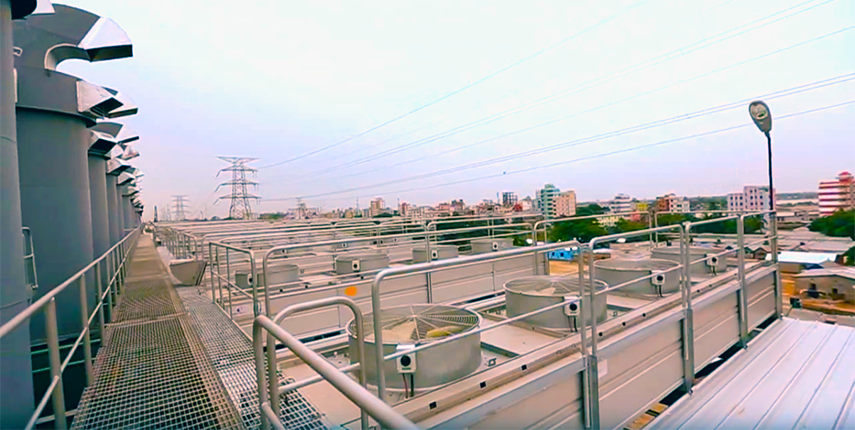

A new model for solving Bangladesh's energy puzzle
| Who | United Ashuganj Energy Ltd. |
| What | 20 x Wärtsilä 20V34SG |
| Where | Bangladesh |
| How | EEQ (Engineered Equipment Delivery) |
This is what we achieved
200
MW of electrical output
>47%
Thermal efficiency
16
MW additional output with the same fuel consumption
In a developing economy like Bangladesh where you will always have erratic demand for electricity use, you have to have these kinds of modular plants which can ramp production up and down within minutes. Absolutely, this is going to be the future.
How we did it
Challenge
- Need for high level of efficiency
- Combating the highly erratic load pattern
- Accomodate the plant within only 6.48 acres of land allotted
Solution
- A combined cycle plant using exhaust heat to power additional turbines
- A modular system employing 20 Wärtsilä 20V34SG gas engines
- Cooperation with customer to create inventive & innovative plant design
Benefit
- Additional 16 MW of output capacity with the same fuel consumption
- Flexibility to quickly change output level while maintaining efficiency with quick start/stop provision
- Compact plant fitting within the main state power station complex
The main details
| Customer | United Ashuganj Energy Ltd. (IPP) |
| Type | Wärtsilä 34 gas power plant |
| Operating mode | Flexible baseload |
| Gensets | 20 x Wärtsilä 20V34SG |
| Total output | 195 MW |
| Fuel | Natural gas |
| Scope | EEQ (Engineered Equipment Delivery) |
| Delivered | 2015 |

Would you like to know more?
Contact us
Fill in a contact form and our experts aim to be in contact within 1-2 business days. Contact us »
Read our brochure
Read our product brochure to get all the details.
Find your local office
Find a Wärtsilä office near you. Access the global address book »
Related solutions and services
Related materials
Trusted partner to the best companies in the world
Explore similar references
Wärtsilä Energy. Let's connect.






